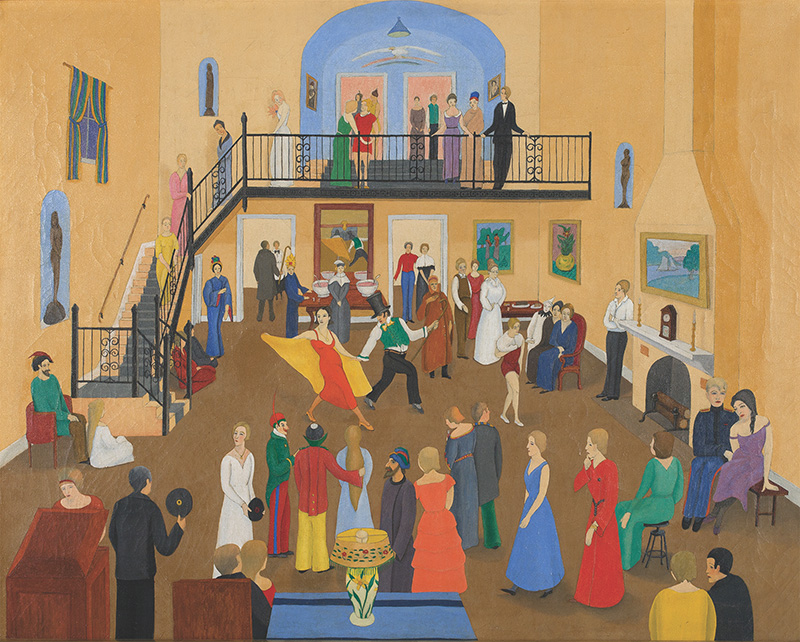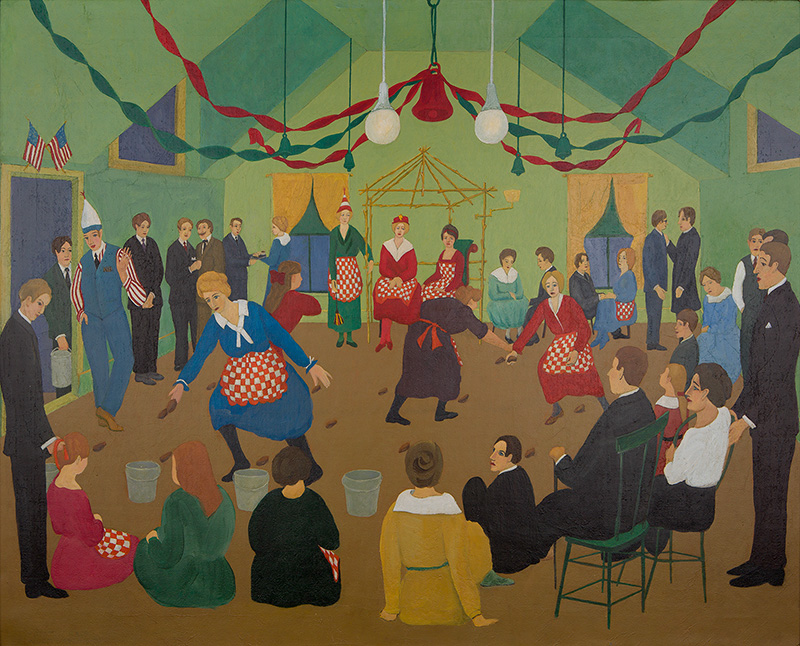
His art was first exhibited at the famed Armory Show of 1913. The pioneering New York dealer Edith Halpert represented his work, and held one-man shows of his paintings at her Downtown Gallery in Greenwich Village. He numbered as his close friends and fellow art club members some of the leading lights of the American art world in the first decades of the twentieth century, among them Walter Kuhn, Arthur Bowen Davies, Yasuo Kuniyoshi, and Robert Laurent. Given all that and more, what’s most remarkable about Wood Gaylor and his work is that they’re not better known. As Andrea P. Rosen, curator of a current exhibition on Gaylor at the University of Vermont’s Fleming Museum of Art, notes in the catalogue for the show: when Gaylor’s name appears in the art-historical record of the period “it pops up primarily in lists.”
Then again, Gaylor did love a party. Like his artistic contemporary Florine Stettheimer, Gaylor was drawn to depictions of social scenes, full of movement and color. His subjects included a group dancing lesson, a busy poster-making shop, and the deck of an ocean liner set for embarkation to Europe. In K.H.M.’s Birthday Party (1933), Gaylor paints a celebratory shindig for artist Kenneth Hayes Miller, a teacher at the Art Students League, in which the central figures are artists Reginald Marsh (wearing a top hat) and Isabel Bishop (in a cape) dancing a pas de deux. Gaylor’s “life serves as a portrait of the bustling New York art world,” Rosen writes. “His artworks serve that purpose as well, depicting artists’ costume balls, auctions, and parties in painstaking detail.”

Perhaps the larger question is why Gaylor—who studied art at the conservative National Academy of Design in New York, and surely would have learned classical techniques for modeling figures and creating depth on the canvas—painted the way he did: in a flat, almost naive style similar to those of Grandma Moses and Horace Pippin. Gaylor was a collector of early American folk art and—like Halpert—helped promote it as a distinctive and estimable genre. Rosen posits that for Gaylor and other artists of the day “embracing early American art was one method artists used to validate an inherently American modernism in the 1920s,” set apart from both academic art and avant-garde European movements such as cubism and fauvism.
Whatever the answer, now that Wood Gaylor is back on the scene thanks to this exhibition, his will be an interesting artistic career to parse.
Wood Gaylor and American Modernism, 1913–1936 • Fleming Museum of Art, University of Vermont, Burlington• to May 8• uvm.edu/fleming
